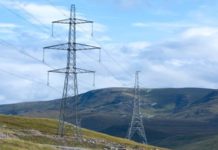 Drax, Rassau Grid Services (Welsh Power), Statkraft, Triton and Uniper have won six-year contracts to provide stability services to National Grid ESO.
Drax, Rassau Grid Services (Welsh Power), Statkraft, Triton and Uniper have won six-year contracts to provide stability services to National Grid ESO.
They will be paid £328m over the life of the contracts, predominantly to help balance the grid by providing inertia, plus voltage and short circuit management – and will build or modify operations of existing assets to deliver those services.
Inertia, traditionally provided by large rotating equipment such as power station turbines, is required to keep the power system stable at 50Hz. Frequency deviations, which can occur if a power station or interconnector trips, can result in outages.
With more thermal plant and therefore spinning turbines coming offline, the system operator needs to procure more dedicated inertia, or responses that act in the same way. Inertia, says Grid, “has been taken for granted” and will become much more important in a renewables-dominated power system.
Existing assets to be used include Drax’s Cruachan pumped-storage hydroelectric power station in Argyll and Bute, Scotland. Some are new build, such as Statkraft’s storage schemes at Keith.
Others are making modifications, according to the ESO, such as removing turbine blades, which apparently makes it easier for them to provide inertia services.
New build infrastructure also includes a synchronous compensator. While not a new technology, this is believed to be the first example in the world to be used in a marketplace for inertia, claims Grid.
“Cheaper and greener”
Because the new service providers can deliver inertia without having to produce electricity, they can thereby enable the system to accommodate more renewable power, said the ESO.
The 12.5GVA seconds of inertia covered in the contracts is the same as could be provided by six coal-fired power station, said Grid, which claimed its new procurement approach would save bill payers as much as £128m over six years.
“This approach is the first of its kind anywhere in the world and is a huge step forward in our ambition to be able to operate the GB electricity system carbon free by 2025,” said ESO head of networks Julian Leslie.
Tender background details here.
A list of the accepted/rejected units here.
Related stories:
National Grid outlines plans to buy more inertia
Fintan Slye: Inertia will become much more important
National Grid launches Mersey reactive power tender
National Grid signs deal to measure inertia
National Grid: Two generators cause big frequency drop
National Grid outlines plans to go 100 per cent renewables by 2025
Follow us at @EnergystMedia. For regular bulletins, sign up for the free newsletter.



